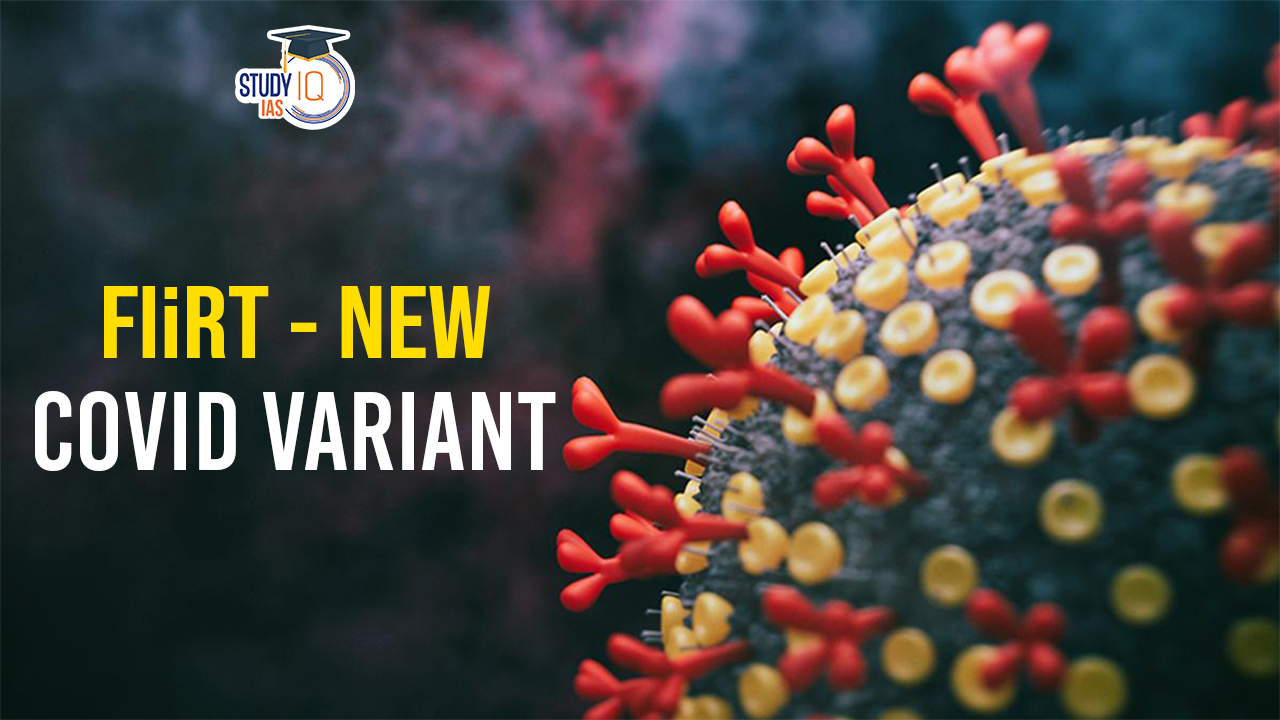Table of Contents
Context: New COVID-19 strains KP.2 and KP1.1, referred to as FLiRT variants, are leading to an increase in cases in the U.S., U.K., South Korea, and New Zealand. FLiRT, is causing a rise in cases globally and has reached India with 250 reported cases.
About FLiRT
- FLiRT is a sub-variant of the Omicron lineage with new mutations.
- Variant: The FLiRT group of variants, specifically KP.2 and KP1.1, are recent descendants of the JN.1 variant of the SARS-CoV-2 virus.
- Origin and Lineage:
- JN.1: A descendant of the Pirola variant (BA.2.86), which is a sub-variant of Omicron, and was previously classified as a Variant of Interest.
- KP.2: Known as the ‘great-grandson’ of JN.1, it is more prevalent in several countries and currently accounts for about 25% of new cases in both the U.S. and the U.K.
- Symptoms: Symptoms of the FLiRT variants are similar to those of other Omicron sub variants and include sore throat, cough, nausea, congestion, fatigue, headache, muscle or body ache, and loss of taste or smell.
- Immunity Evasion: Research has shown that the FLiRT variants, particularly KP.2, are capable of evading immunity provided by vaccines and previous infections, which presents additional challenges in managing COVID-19.
- Prevalence and Spread: The variants are causing a surge in COVID-19 cases in countries such as the U.S., U.K., South Korea, and New Zealand.
COVID-19 Status in India
- Detection: The Indian SARS-CoV-2 Genomics Consortium (INSACOG), a network of genomic laboratories, has detected cases of FLiRT variants in India.
- Response: There is an observed increase in COVID-19 cases in India, highlighting the need for updated vaccinations and continued precautionary measures.
Preventive Measures
- Stay updated with Covid-19 vaccines, including boosters.
- Use well-fitting respirators like N95s or KN95s in indoor public settings, particularly in high transmission areas.
- Increase airflow and filtration in indoor spaces.
- Use rapid antigen tests if exposed to gatherings or individuals with Covid-19.
- Isolate if tested positive and stay home to prevent spread.
- Follow hand hygiene and social distancing guidelines.
- Stay informed about local transmission levels and adhere to public health guidance.
Vulnerability of the Elderly
- Senior citizens are more prone to severe illness due to age-related changes, decreased immune function, and comorbidities.
- Adults aged 60 and older, particularly those with pre-existing conditions like heart disease, lung disease, diabetes, or cancer, face higher risks of severe and potentially fatal Covid-19 infections.
- The most vulnerable groups include those 65 and older, pregnant women, and the immunocompromised.
Effectiveness of Earlier Vaccines
- FLiRT may cause breakthrough infections and partial immune evasion.
- Older vaccines still provide significant protection against severe illness, hospitalisation, and death.
- Vaccines may not fully prevent infection but reduce viral loads, leading to milder symptoms and lower transmission rates.
| Indian SARS-CoV-2 Genomics Consortium (INSACOG) |
Establishment
Consortium Structure
Purpose of Establishment
Specific Objectives
|


 SSC MTS Salary 2025, Check Highest Salar...
SSC MTS Salary 2025, Check Highest Salar...
 F-35 Fighter Jet Stranded in Kerala: Dis...
F-35 Fighter Jet Stranded in Kerala: Dis...
 Quad Summit 2025: Key Announcements, Str...
Quad Summit 2025: Key Announcements, Str...





















